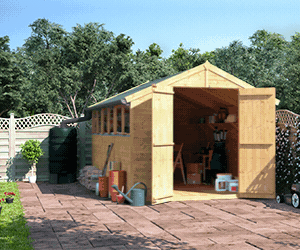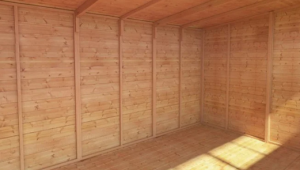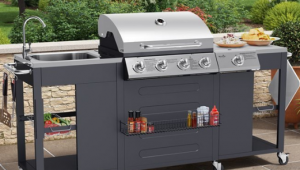Jump to:
There’s something captivating about the aroma of smoked meat wafting through the air. Be it tender ribs, succulent brisket, or juicy pulled pork — smoked meats have a unique allure. But have you ever wondered how that delectable transformation takes place? How does smoking meat work its magic, turning raw cuts into flavorful delights?
In this blog post, we’ll unravel the art and science behind smoking meat.
The Basics of Smoking Meat

Smoking meat is a culinary technique that involves flavouring and preserving meats. The process includes exposing meats to low temperatures and smoke.
It’s a time-honoured tradition with roots that can be traced back to ancient times. From indigenous tribes in North America to the nomadic cultures of Central Asia, to name a few. It emerged as a means of prolonging perishable foods for extended periods. Smoking meat uses fire and smoke to extend the meat’s shelf life and make it more portable for long journeys.
Beyond its practical purpose, smoking meat also played a role in cultural traditions. It became a culinary art form, with unique techniques passed down through generations. In various cultures, smoking meat became a communal activity. It brings people together around the fire.
Today, the practice of smoking meat continues to captivate food enthusiasts worldwide. Apart from the preservation aspect, smoking meat offers unparalleled flavour enhancement. The slow exposure to smoke infuses the meat with complex, smoky notes that add richness to every bite. Additionally, smoking can transform tough cuts of meat into tender and succulent masterpieces. All thanks to the low and slow cooking process that renders fat.
Smoking meat is a culinary technique rooted in ancient traditions and cultural significance. It creates mouthwatering delights that have stood the test of time, thanks to its:
- flavour enhancement
- preservation
- tenderness improvement
Despite its history, modern smoking is conducted using smoker BBQs and can be pretty straightforward!
The Science of Smoking

During the smoking process, several chemical reactions take place. The primary chemical reaction is known as the Maillard reaction. It occurs when the proteins and sugars in the meat combine under the influence of heat and smoke. This results in the formation of flavourful compounds and the brown crust on the surface of the meat.
Smoke plays a crucial role in smoking meat, contributing to the flavour profile. As wood or other smoking materials combust, they release complex organic compounds. These include the following:
- phenols
- carbonyls
- organic acids
These compounds interact with the meat’s surface. They infuse it with distinctive smoky flavours that are highly sought after.
Temperature and time are essential factors in smoking meat. Low temperatures are used to slowly cook the meat, allowing the smoke to penetrate deeply. Typically between 225°F (107°C) and 275°F (135°C). The extended cooking time ensures that the proteins undergo collagen breakdown. This results in a tender, melt-in-your-mouth texture. Connective tissues and fats also render down, adding juiciness to the meat.
Equipment and Techniques
There are several types of smokers available. Below are some of the popular types:
Offset smokers

Offset smokers feature a separate firebox attached to the cooking chamber. They allow for indirect heat and smoke circulation. Thus, using one allows for a slow and even cooking process.
The firebox is responsible for generating smoke and heat. This then travels into the cooking chamber, imparting flavour to the meat.
Vertical smokers
Vertical smokers have a tall, cylindrical shape with multiple racks for food placement. They operate by placing the heat source at the bottom and allowing the smoke to rise and surround the meat. They are also known for their efficient heat distribution.
Electric smokers
Electric smokers are convenient and easy to use. They rely on electricity to generate heat and produce smoke. These smokers often have precise temperature controls. They can be set to maintain consistent heat levels throughout the smoking process.
Pellet smokers
Pellet smokers use wood pellets as their fuel source. These smokers feature a hopper that feeds the pellets into a combustion chamber. In the chamber, they ignite and produce both heat and smoke.
Pellet smokers offer excellent temperature control. Plus, they provide a wide range of wood pellet flavours for customisation.
When selecting the right wood for smoking, consider the type and flavour it imparts. Different woods offer distinct flavours and aromas to the meat, such as:
- Hickory: Provides a robust and smokey flavour
- Apple and Cherry: Offer a milder and slightly sweet taste
Experimenting with various wood types allows you to achieve a desired flavour profile.
Preparing the Meat for Smoking

Choosing the right meat cuts is crucial for achieving optimal results when smoking. Consider factors such as texture, fat content, and marbling. Cuts with higher fat content are ideal for smoking. Take pork shoulder or beef brisket, for instance. They maintain juiciness and tenderness throughout the long cooking process. Marbling also adds flavour and moisture to the meat when it melts during smoking.
Brining and dry rubs play vital roles in enhancing flavours and retaining moisture. Brining involves soaking the meat in a saltwater solution. This process helps tenderise and add flavour to the meat while keeping it juicy. Dry rubs create a flavourful crust on the surface of the meat. Usually, consisting of a mixture of herbs, spices, and sometimes sugar. Overall, they add complexity and depth to the final product.
Before smoking, trim excess fat and remove tough connective tissues from the meat. This helps the flavours penetrate more effectively and ensures even cooking. Additionally, allow the meat to come to room temperature before smoking. Doing so promotes more even cooking throughout the cut. Taking these steps helps you achieve the best possible results when smoking.
Round-up
We have journeyed through the basics of smoking. Explored the chemical reactions that occur. And uncovered the significance of smoke, temperature, and time.
To master this craft, understanding the types of smokers and the role they play is essential. Selecting the right wood and meat cuts also ensures that each bite is a flavourful delight.
Ready to embrace the magic of smoking meat and unlock a world of culinary possibilities? Have a look at our range of smoker BBQ to get started! A BillyOh smoker is guaranteed to bring a whole new dimension to your outdoor cookouts.













What do you think ?